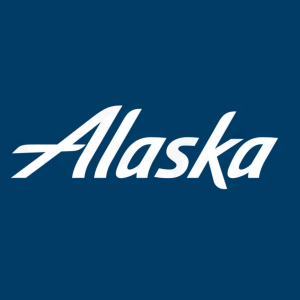Alaska Airlines announces investment in Loft Dynamics and partnership to develop and deploy first Boeing 737 VR simulators
Rhea-AI Summary
Alaska Airlines (ALK) has announced a strategic investment in Loft Dynamics, aiming to develop the first hyper-realistic, full-motion Boeing 737 VR simulator. The investment, made through Alaska Star Ventures, will support the creation of virtual reality training technology that could revolutionize pilot training.
The partnership marks Loft Dynamics' entry into the fixed-wing market, bringing their FAA- and EASA-qualified VR technology to commercial airline training. The new simulators will feature a six-degrees-of-freedom motion platform, 360-degree panoramic 3D view, advanced full-body tracking, and customizable training scenarios, all while requiring just 1/12th the space of traditional simulators.
Once developed and approved by the FAA in the coming years, these VR simulators will be installed at Alaska Airlines bases, potentially reducing training travel time and costs while maintaining high training standards. In the meantime, Alaska and Loft plan to explore supplementary training opportunities alongside existing FAA-required programs.
Positive
- Investment in cutting-edge VR technology could reduce training costs and improve operational efficiency
- Potential competitive advantage as first airline to implement this training technology
- Reduced facility space requirements (1/12th of traditional simulators) could lead to significant cost savings
- Enhanced training accessibility and flexibility for pilots
Negative
- Technology still pending FAA approval with multi-year timeline
- Significant investment required in unproven technology for commercial aviation
- Potential implementation and transition risks from traditional to VR-based training
Insights
Alaska Airlines' investment in Loft Dynamics marks a significant technological leap for commercial pilot training. The development of Boeing 737 VR simulators addresses several critical industry pain points that legacy full-flight simulators present. These traditional systems, while effective, require enormous physical space, come with
The technical specifications of Loft's solution are particularly impressive. Their system combines a full-motion platform with 6 degrees of freedom, 360-degree 3D visualization, and advanced body tracking—essentially delivering comparable fidelity to traditional simulators in 1/12th the physical footprint. This significant space reduction enables deployment at individual pilot bases rather than centralized training centers, dramatically reducing non-productive pilot travel time.
From an industry perspective, this represents a potential paradigm shift. If FAA qualification is achieved, which seems plausible given Loft's existing regulatory approvals for helicopter simulators, we could see widespread adoption across carriers facing similar training constraints. The technology would be particularly valuable for addressing the global pilot shortage, as it would increase training capacity without requiring the massive capital expenditures and facility investments of traditional simulators.
The aviation training market's reaction to this technology will depend heavily on the fidelity of the final product and pilot acceptance, but Alaska's willingness to serve as launch customer provides crucial industry validation. The fact that Loft has already secured regulatory approval for its helicopter simulators suggests they've overcome significant technical and regulatory hurdles in aviation training simulation.
This strategic investment through Alaska's venture capital arm carries multiple financial implications beyond the undisclosed investment amount. The primary value proposition centers on dramatically improving the economics of pilot training, which represents a significant operational expense for airlines.
Traditional full-flight simulators typically cost between
While immediate financial impact will be minimal given the multi-year development timeline, the long-term strategic positioning is noteworthy. By participating as both investor and development partner, Alaska gains early access to potentially disruptive technology while influencing its development to address specific operational needs. This approach effectively transforms a portion of their training R&D budget into an equity investment with potential upside.
The pilot shortage context adds another dimension of value. Airlines unable to train pilots efficiently face constraints on growth and operational reliability. More accessible, distributed training infrastructure could provide Alaska competitive advantages in pilot recruitment, retention, and deployment flexibility.
The prudent approach of initially supplementing rather than replacing existing FAA-required training methods demonstrates appropriate risk management while pursuing innovation. This balanced strategy suggests the investment was made with appropriate consideration of near-term operational needs alongside long-term transformation potential.
In a first for global airlines, Alaska Airlines will lend expertise from its industry-leading training program to inform development of next generation simulators. Loft enters fixed-wing market, bringing FAA- and EASA-qualified VR technology to commercial airline training.
"
Traditional full-motion simulators have long been the gold standard for airline training, providing an essential and proven method for pilot instruction. However, their substantial footprint, high cost, and operational constraints limit scalability and accessibility. As airlines, operators, and regulators seek more flexible solutions, VR is emerging as a powerful and influential solution.
"Pilot training has significantly evolved over the past 30 years, from training solely in an aircraft to using full-flight simulators. With the potential of Loft's hyper-realistic VR simulator, we could be transforming commercial pilot training as we know it today," said Capt. Jeff Severns, managing director of flight operations training at Alaska Airlines. "These VR simulators could provide a fully immersive, high-fidelity, data-driven experience that replicates real-world flight scenarios — all in a device compact enough to fit in a standard office. This accessibility could allow pilots to train more frequently and refine their skills with greater efficiency. We are committed to offering the most advanced training solutions available, including VR, and look forward to being Loft's first fixed-wing customer."
- Six-degrees-of-freedom full-motion platform with improved pilot motion cueing that replicates real-world physics, force feedback from flight controls and all haptic sensations of the aircraft.
- A 360-degree panoramic 3D view, providing correct visual cues inside and outside the aircraft.
- Advanced full-body pose tracking, allowing pilots to see their hand and body movements in real-time within the VR environment.
- Customizable training scenarios and environments, enabling pilots to practice any situation, condition, and maneuver safely and realistically.
- Compact size, requiring 1/12th the space of legacy full-flight simulators, allowing for increased accessibility and flexibility.
- Virtual demonstration mode, which lets instructors record immersive lessons — including visuals, audio and control inputs — for pilots to replay and learn from during future simulator sessions.
- LoftSPATIAL app for Apple Vision Pro, which, when connected to the simulator, enables pilots to use spatial computing to train anytime, anywhere.
"Our investment in Loft Dynamics underscores our conviction in this technology, which enables hyper-realistic training of complex scenarios more effectively and more relevantly," said Pasha Saleh, director of corporate development at Alaska Airlines. "Over time, this technology would enable us to bring critical training closer to the pilot base, reducing unnecessary travel and time while delivering industry-leading pilot training. It represents a paradigm shift and has the potential to dramatically enhance the quality of commercial pilot training."
The eventual Boeing 737 VR simulator will be submitted to the Federal Aviation Administration (FAA) for approval — likely in the next few years. In the interim,
About Loft Dynamics
Loft Dynamics AG is the global leader in qualified virtual reality flight simulation training devices (FSTD). It is the only VR FSTD qualified by the FAA and EASA. Equipped with a 3D high-resolution panoramic view, dynamic six-degrees-of-freedom motion platform, and full-scale replica cockpit with a unique pose tracking system, our revolutionary VR simulators provide a more immersive, realistic, customizable, and safe training experience. By offering a training solution 10 times smaller and significantly more cost-effective than legacy simulators, we enhance training accessibility and scalability, empowering highly skilled pilots to meet global demand. We serve leading manufacturers, airlines, operators, schools, and organizations worldwide. Headquartered in
About Alaska Air Group
Alaska Airlines, Hawaiian Airlines and Horizon Air are subsidiaries of Alaska Air Group, with McGee Air Services a subsidiary of Alaska Airlines. With hubs in
![]() View original content to download multimedia:https://www.prnewswire.com/news-releases/alaska-airlines-announces-investment-in-loft-dynamics-and-partnership-to-develop-and-deploy-first-boeing-737-vr-simulators-302420608.html
View original content to download multimedia:https://www.prnewswire.com/news-releases/alaska-airlines-announces-investment-in-loft-dynamics-and-partnership-to-develop-and-deploy-first-boeing-737-vr-simulators-302420608.html
SOURCE ALASKA AIRLINES









